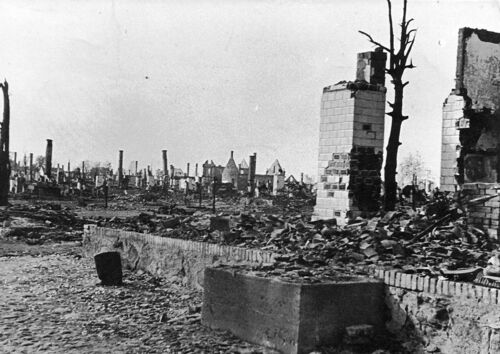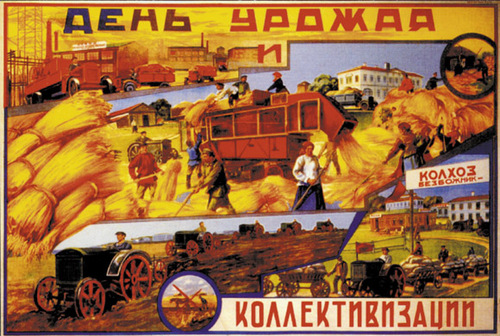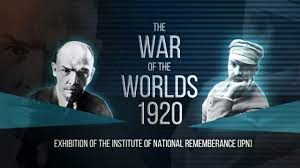Timeline of Polish History
Select a period:
1795-1918
The Republic of Poland, partitioned by Russia, Prussia and Austria, does not exist as a state.
read more1918
the 4-year-long First World War, during which Poland’s occupiers found themselves on opposite sides, ends. Austria and Germany are among the defeated, the Russian Tsar empire has collapsed. Poland regains independence.
read more1919-1921
The young state fights for its borders: the uprisings in Greater Poland and Silesia give Poland the lands in the North and West, as confirmed by the Treaty of Versailles. The wars against the Czechs, Ukrainians and Bolshevik Russia will determine the shape of the southern and eastern borders.
read more1920
After the initial successes of the Polish Army, a new offensive launched by Bolshevik Russia forces the Poles to retreat as far as the Vistula River. It is there that the Battle of Warsaw takes place, in which, thanks to the Józef Piłsudski’s bold maneuver, Polish troops defeat the Red Army.
read more1921
The Treaty of Riga establishes the shape of the Polish-Bolshevik border. The Polish Sejm passes the March Constitution, introducing the dominant position of the parliament versus the executive power.
read morePoland gains access to the Baltic Sea, but not to the Port of Gdańsk, which results in the Sejm’s adoption of the law authorizing the government to build a port in the village of Gdynia. The port will be opened in two years, and within a decade it will become the largest and most modern transshipment port on the Baltic Sea. Germany and the Soviet Union sign an agreement in Rapallo to normalise their diplomatic relations and establish close economic cooperation, which, in a dozen or so years, will translate into rapid develoment of their military potential, and, in turn, enable them to pursue a policy of expansion.
France, Great Britain, Italy and Belgium sign the Locarno Treaties with Germany; Poland’s neighbour accepts the shape of its western borders, though not the eastern one with Poland, which signals the intention to revise it.
1926
The so-called Piłsudski’s May coup d’état and the subsequent amendments to the constitution strengthen the executive branch. The power is taken by a new political camp called ‘’Sanacja’’, which will rule the country until 1939.
1932
Poland signs a non-aggression pact with the Soviet Union.
read more1934
Poland and Germany sign a declaration of non-aggression, but the Third Reich, ruled by Adolf Hitler's National Socialists, does not hide its willingness to revise the terms of the Treaty of Versailles, and prepares to pursue the policy of expansion.
read more1935
Following the adoption of the April Constitution, the executive branch gains more power at the expense of the legislative one, and greater competences are granted to the President of the Republic of Poland. One of the fathers of Poland’s independence, Marshal Józef Piłsudski, passes away.
1936
The Polish Government launches the Central Industrial District, in which over 100,000 people will find employment. This project (and many more) will ultimately reinforce the economic potential of the state and strengthen its international position.
1937-1938
The Soviet NKVD begins so-called “Polish Operation” – a campaign of repression against Poles living in the USSR. In the 16-month-ethnic cleansing, out of 143,000 people arrested, 111,000 are murdered on false charges.
read more1938
Great Britain and France come to an agreement in Munich which is a culmination of the British-French policy of appeasing Hitler. As a result, Germany expands its territory to include a part of Czechoslovakia. Shortly thereafter, Poland reclaims Zaolzie, a region it had lost in 1919.
1939
Germany and the USSR sign the Molotov–Ribbentrop Pact, with the Secret Protocol which draws the borders of Soviet and German spheres of influence across Poland. An Anglo-Polish military alliance is formalised, and Poland renews a similar alliance with France.
read more1939
Poland, attacked by Germany, Slovakia, and a little over two weeks later by the USSR, fights against the overwhelming forces of the aggressors; the Western Allies declare war on Hitler, but other than that, do not come to help the Poles. The country comes under occupation by Germany, the Soviet Union, Slovakia and Lithuania. The Polish Government moves to France, where the Polish Army will be recreated. Even in September 1939, "Służba Zwycięstwu Polski" [Service for Poland's Victory] is created as the first Polish resistance movement during the WWII; it is soon renamed "Związek Walki Zbrojnej" [Union for Armed Struggle], and in February 1942, will become the Home Army.
read more1940
The Germans wipe out Polish intellectuals in the territories incorporated into the Third Reich, as well as in the General Government, resettle hundreds of thousands of Poles, limit the rights of the Polish population, and lock Jews in ghettos. They build concentration camps, including KL Auschwitz, whose first prisoners are Poles. In response, the Polish Underground State, comprising both military and civilian authorities, emerges and is consolidated. It puts up resistance and organizes social life on a scale unheard of in any other occupied country.
read more1940
The Soviets deport hundreds of thousands of Poles from the annexed territories into the USSR and carry out the Katyn Massacre, murdering 22,000 Polish military personnel, state functionaries and intellectuals.
read more1940
A part of the recreated Polish Army takes part in the battles for the Norwegian Narvik and in the defense of France against the German invasion; after its fall, the soldiers evacuate to the British Isles. Polish pilots help in repelling the attacks of the German air force, making a massive contribution to the victory in the so-called Battle of Britain.
read more1941
Both under German and Soviet occupation repressions against Poles intensify. Following the German invasion of the Soviet Union, Poland restores diplomatic relations with the Soviets. As a result of the so-called Sikorski-Mayski Agreement, thousands of Poles are released from Soviet labor camps, and are formed into military units subordinated to the Polish authorities.
1941
The Polish Independent Carpathian Rifle Brigade fights with distinction in the North African Campaign, particularly during the Siege of Tobruk. Polish vessels defend the North Sea and the Atlantic Ocean against the Kriegsmarine and its U-Boats, while fighter and bomber squadrons begin an offensive against the enemy in occupied France, the Netherlands and Germany.
1942
The Germans commence the bloodiest phase of the extermination of Jews. "Einsatz Reinhardt" will claim nearly 2 million lives in the death centers of Belzec, Sobibór, Treblinka and Majdanek, the expanded KL Auschwitz, and other camps. To help the persecuted, the Polish Underground State establishes bodies such as "Żegota", and informs the international community about the genocide; however, the Western Allies make no real attempts to stop the Holocaust.
read more1942
The Home Army and other Polish Resistance organisations mount military and intelligence operations against the German administration.
read more1942
General Władysław Anders leads over 100,000 Polish soldiers and civilians released from Soviet labor camps under the Sikorski-Mayski pact to the Middle East, at that time controlled by the British; the military personnel will soon be formed into the Polish II Corps, which will make a crucial contribution to the Allied victory on the Italian front. Polish sailors take part in the Battle of the Atlantic. Polish vessels escort convoys to Murmansk and fight the enemy in the Mediterranean and Aegean Seas. Polish airmen fly on intensified bombing raids of Germany.
read more1943
The Warsaw Ghetto Uprising breaks out, and is bloodily suppressed by the Germans
read more1943
Nationalists of the Ukrainian National Army begin systematic extermination of Poles in the German-occupied areas of Volhynia and Eastern Lesser Poland.
read more1943
The USSR uses the way the Germans publicise the Katyn Massacre as a pretext to break off diplomatic relations with the legal Polish authorities. Stalin forms units made up of Poles, which he needs for military and propaganda purposes to fully subjugate the country. Prime Minister of the Polish government-in-exile General Władysław Sikorski dies in a plane crash near Gibraltar.
read more1943
The Big Three (US President Franklin Delano Roosevelt, British Prime Minister Winston Churchill and Soviet leader Joseph Stalin) meet at the Tehran Conference to draw the new eastern border between Poland and the USSR on the so-called Curzon Line.
1944
The Home Army launches Operation Tempest, inspiring a series of local uprisings that are instrumental in liberating Vilnius and Lviv from the German; it is done in order to stand as allies and hosts for the approaching Soviet troops, in the hope that the political and propaganda considerations, as well as the support of the Western Allies, will force the Soviets to respect the sovereignty of the Polish civil authorities. Stalin, however, creates a fully Moscow-dependent, so-called Polish Committee of National Liberation (PKWN). The Polish resistance, loyal to the legitimate Polish Government-in-exile (in London), becomes the target of Soviet repressions. The biggest freedom uprising of the Operation Tempest breaks out in Warsaw. Yet, it will be bloodily suppressed by the Germans within two months, while almost completely passive Red Army formations wait across the Vistula River.
read more1944
The Polish II Corps of General Władysław Anders fights in Italy, capturing Monte Cassino and Ancona. Following the Allied invasion in Normandy, the 1st Armored Division commanded by General Stanisław Maczek begins its raid across France, Belgium, the Netherlands and Germany. The 1st Independent Parachute Brigade led by General Stanisław Sosabowski fights in the Operation Market Garden in September (during the Warsaw Uprising) – an unsuccessful attempt to capture the bridges and beachheads on the Rhine River. The Allies will not cross the Rhine before March 1945 – but as the Warsaw Uprising is raging and the Soviet offensive stops on the Vistula River in August 1944, the Red Army will fail to capture most of Germany's territory.
read more1945
The Soviet authorities capture the leaders of the Polish Underground State, while the Red Army, the NKVD and the Polish Workers' Party ruthlessly suppress all forms of independence aspirations, anti-communist resistance or loyalty to the Polish authorities in exile – by murdering, arresting and deporting opponents to the labor camps in the USSR. Following the decisions taken by the Big Three in Yalta, the Kremlin appoints the authorities that are going to organize parliamentary elections in the reduced territory of the country, and legalize the communists, even though they are not accepted by the Polish society. The anti-communist resistance begins to take shape.
read more1945
In Yalta, the Western Allies agree to make further concessions to Stalin, who strives to seize the eastern half of Poland – including Vilnius, Lviv, Grodno, Pinsk, Brest and Tarnopol – and to subjugate the rest of the country. The Potsdam Conference confirms that the new Poland will receive the southern part of East Prussia and the lands east of the Oder and Nysa Łużycka Rivers, which belonged to Germany before the war.
read more1946
The Soviet occupiers and the Polish Workers' Party rig the referendum and introduce legislation aimed at nationalising the economy, while continuing repressions against the structures subordinate to the legitimate government-in-exile. The communists are determined to take control of the administration, economy, media, education and other areas of the nation’s life. Soldiers of the Polish People’s Army, Militia officers and civilians take part in an outburst of violence towards the Jewish community in Kielce, as a result of which several dozen of its members die. The incident is commonly known as the Kielce Pogrom.
read more1947
The communists, representing the Soviet interests in Warsaw, eliminate the opposition by means of murder, imprisonment and other forms of terror. The Legislative Sejm, elected in the rigged elections, passes the Small Constitution. As demanded by Moscow, Poland refuses to participate and benefit from the Marshall Plan, American aid to European economies, devastated by the war.
read more1948
The Polish Workers' Party merges with the Polish Socialist Party to form the PZPR – the Polish United Workers' Party – which will rule the country on behalf of Moscow for the next four decades. Based on the Soviet model, the communist government in Poland adopts collectivisation policy to transform traditional agriculture; however, the plan meets with great social resistance and will eventually be abandoned.
1952
The constitution adopted by the communists introduces a new name for the Polish state, the Polish People's Republic (Polska Rzeczpospolita Ludowa, PRL), which replaces the previously used Republic of Poland (Rzeczpospolita Polska).
1955
The Soviet-bloc countries sign the Warsaw Pact, a union of political and military nature.
1956
Soviet leader Nikita Khrushchev delivers a secret speech on the cult and crimes of Joseph Stalin; General Secretary of the Polish United Workers' Party, Bolesław Bierut dies in Moscow, and as a result, communist Poland sees a short-lived liberalization of the treatment of the opposition by the authorities, mitigation of previous sentences and amnesty for many incarcerated people. The Stalinist period ends and the “Thaw” begins in the Polish People’s Republic. A more liberal faction of the Polish communists inspires partial democratization of political and economic life. In June, the first in post-war Poland mass workers’ protests against violation of their rights break out in Poznań. They are bloodily suppressed by the Polish People's Army.
read more1968
A series of demonstrations of students demanding democratic rights sweep the country. It is a protest against the cultural policy of the Polish People's Republic, initiated by the so-called Letter of 34 to Prime Minister Józef Cyrankiewicz, signed by outstanding representatives of Polish culture and science, and calling for freedom of speech, science and culture, as well as liquidation of censorship. The communists, led by Władysław Gomułka, respond with massive repressions against the protesters, and unleash anti-Semitic propaganda campaign, forcing 13,000-20,000 people of Jewish origin to leave the country.
read more1970
Inefficiency of centrally planned economy in Poland forces the authorities to significantly increase the prices of basic foodstuffs, which leads to social unrest, especially in the cities on the Baltic Sea coast. The authorities deploy the military to quell street protests, and the soldiers open fire on the protesters, killing dozens and wounding hundreds. Władysław Gomułka, the leader of the ruling communist party, steps down, and is replaced by Edward Gierek.
1976
The communists announce the rise in prices, and this leads to mass protests in Radom, Ursus and Płock. The authorities of the Polish People's Republic, led by Edward Gierek, brutally suppress the protests. In order to provide legal, financial and medical assistance to the protesters, the Workers' Defense Committee is established.
1978
Cardinal Karol Wojtyła is elected the Pope, adopting the name of John Paul II.
read more1979
The first visit of John Paul II in his homeland stimulates freedom aspirations of Poles, and contributes to strengthening their resistance against the communist authorities.
read more1980
Further increases in prices trigger a wave of strikes. Forced to negotiate, the authorities back down, agreeing to the demands of the protesters, primarily to legalize the "Solidarity" Independent Self-Governing Trade Union.
read more1981
The authorities introduce martial law in order to destroy "Solidarity" by force; they restrict civil liberties, imprison thousands of people, mainly opposition members, and brutally suppress strikes and protests.
read more1983
Lech Wałęsa, the Chairman of “Solidarity”, is awarded the Nobel Peace Prize.
1984
Although the communists lift martial law in 1983, the repressions against the opposition continue. The public opinion is shaken by the death of the Catholic priest and chaplain of “Solidarity,” Jerzy Popieluszko. His murderers are officers of the Security Service, the instrument of oppression in the Polish People’s Republic.
read more1989
Following further strikes, the communist party is forced to negotiate and make concessions to the protesters. As a result of the Round Table talks, the first partially democratic parliamentary elections are held, which turn out to be a landslide victory for “Solidarity”. Tadeusz Mazowiecki’s government initiates the transformation of the Polish economy into a market-oriented one.
read more1990
"PZPR", the communist party ruling so far, is dissolved; the first free presidential election is held.
1991
The Poles vote in the first free parliamentary elections since the Second World War.



